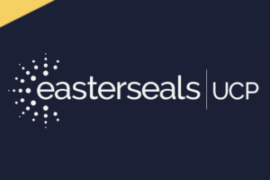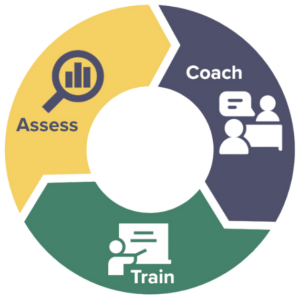The financial services sector remains one of the least trusted industries in the United States, according to the 2022 Financial Services edition of the Edelman Trust Barometer. Although trust in the finance industry has risen slightly over the past year, it remains near the bottom of the pack with only 56% of people saying they trust their financial institutions.
The financial industry as a whole has impeded its success with irresponsible behavior from subprime lenders that led to the Great Recession, scandals like the widespread credit fraud at Wells Fargo, and a history of racialized lending practices. It’s also not helpful when, in their day-to-day interactions, customers are treated as transactions or, even worse, treated differently because of the size of their bank accounts or fluency with the finance sector.
To combat this reputational issue, finance professionals should intentionally build a foundation of trust with customers by treating them with respect and professionalism. At the most fundamental level, financial customers are looking for advisers to build meaningful relationships that demonstrate an elevated level of care, authenticity, and integrity. A personalized, compassionate experience can make all the difference. Yet, we often see a lack of diversity and inclusion in financial institutions – a disconnect that sows the seeds of mistrust.
Put simply, finance sector leaders must be intentional about diversity, equity, and inclusion (DEI) as a business strategy in order to foster a positive company culture that builds trust with both employees and customers.

One of the ways financial institutions can start to rebuild trust with employees and the market is by using inclusive language – not just in the workplace but also in social media posts, job listings, company emails, website copy, marketing campaigns, and more.
By implementing inclusive language throughout your organization, you create a foundation for more trusting relationships, strengthen your customers’ confidence in your services, and attract a more diverse, talented workforce. Although it is just one step in the direction of sustainable and integrated DEI efforts, inclusive language is a great place to start.
Language changes to increase inclusion
Outdated language habits can be deeply ingrained in your workplace culture. Unintentional exclusionary language is sneaky and pervasive, so it’s important to examine where your words originate. If making the switch to inclusive terms feels uncomfortable, examine your existing word choice habits and why you feel uncomfortable changing them. Remember, inclusive language is a practice – not a destination. It can take time to become comfortable with change.
Especially when you’re just starting out on your inclusive language learning journey, what matters most is that you pause to consider the words you’re using and what they may unintentionally communicate to others. For example, it might feel natural to say “Hello, Ma’am/Sir” when speaking with a customer, but inclusive language practices guide us to ask how someone would like to be addressed instead of assuming.

Emphasize progress over perfection, and don’t be afraid to open things up to examine them more fully. Questioning your own language habits is a critical piece of learning to do better. Next, let’s look at some other common examples of non-inclusive language in the finance sector, and talk about the more-inclusive phrases you can use instead.
- Be mindful of the connotations and implications behind your metaphors. A few outdated but still common phrases that rely on negative connotations include “black market,” “white-list,” and “sanity check.” Replace phrases like these with more specific and relevant language like “illegal market,” “allow list,” and “confidence check” respectively.
- Avoid cultural expressions like “you can’t teach an old dog new tricks,” “piece of cake,” “knock on wood,” and “nip it in the bud.” These phrases may not translate well from country to country, region to region, or even generation to generation, and in the process, they can make people feel excluded or unwelcome to participate in conversation.
- Avoid using any identity descriptor as a noun. (Descriptors should be used as adjectives instead.) For example, “Black people” versus “Blacks,” “our millennial workers” versus “the millennials,” “our Jewish clients” versus “Jews,” and “people with disabilities” versus “the disabled.” Using identity terms ONLY as adjectives is a reminder to emphasize the whole, complex person, not just one dimension of their identity. Person-centered language for social class origin might sound something like “people from lower socioeconomic origins,” “children who are economically disadvantaged,” and “people who are affluent.”
- Use gender-free terms and the singular “they,” which is now considered grammatically correct by all major grammar guides and English language associations. For instance, instead of saying “if a customer needs me after hours, he or she is welcome to call,” you can easily just say “they are welcome to call.” Only mention a person’s gender when it is truly relevant to the conversation. Otherwise, use the gender-free “they” instead.
- Make it part of your foundational practice to not make assumptions about the customer on the phone or in-person, and ask how someone would like to be addressed. Often the formal setting of the financial sector impedes someone from feeling comfortable sharing their pronouns or chosen names.
- Pause to explain industry-specific language or acronyms when speaking with clients. Jargon only impedes effective communication, understanding, and relationship building.
Remember, as a financial services provider, you serve all members of our diverse population. Understanding best practices for inclusive language will help you connect more fully and authentically with people who may not represent your own communities and demographics.
For additional best practices, we recommend these resources:
- The Inclusive Language Handbook: A Guide to Better Communication and Transformational Leadership
- “Can I Still Use Sir and Ma’am? When Should I Use Mr., Mrs., Ms., or Mx? What to Do When You Don’t Know Someone’s Gender”
- “How to Get Better at Using Inclusive Language in the Workplace”
Andy DeRoin is a project manager for the Product and Innovation department at The Diversity Movement. They are a diversity and inclusion educator with a background in social work and a passion for long-term, diversity-oriented initiative development, advocacy, and strategic alignment with organizational goals. Connect with Andy on Linkedin.















